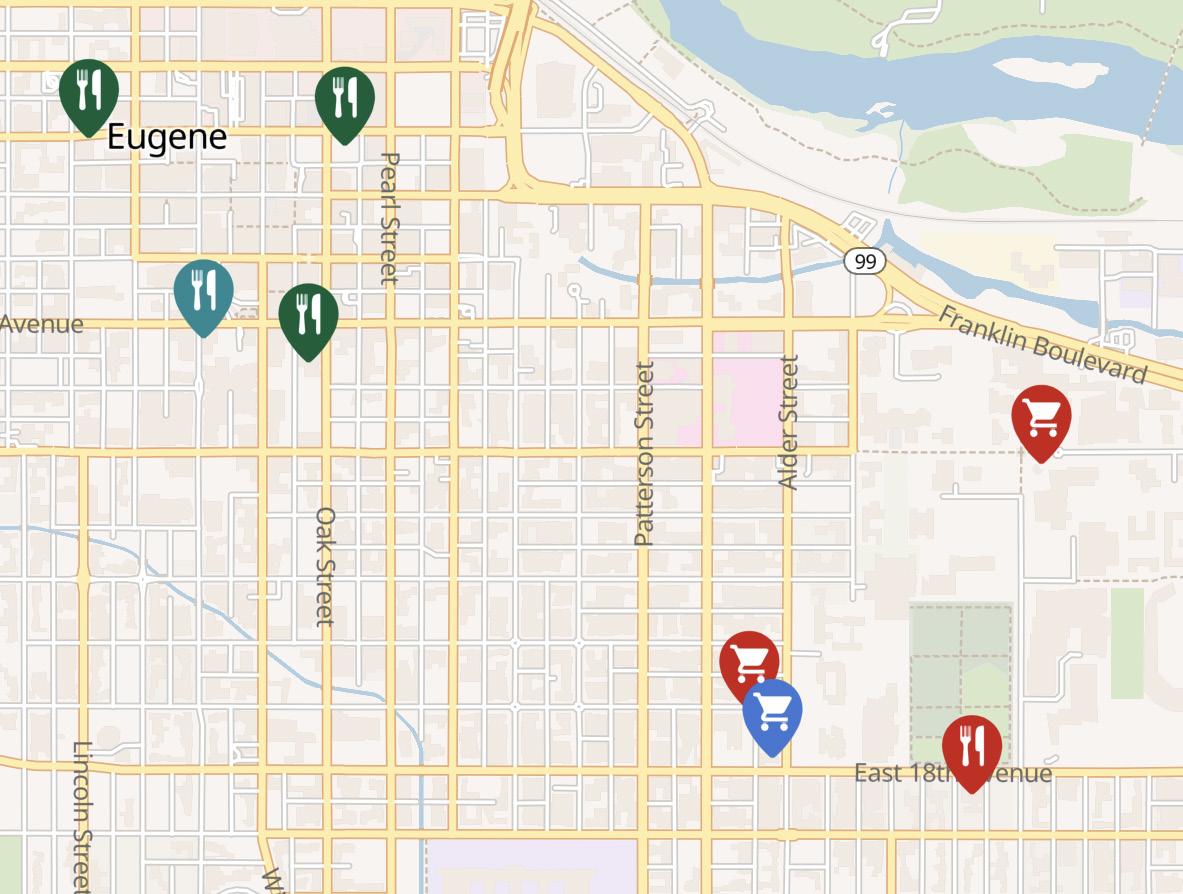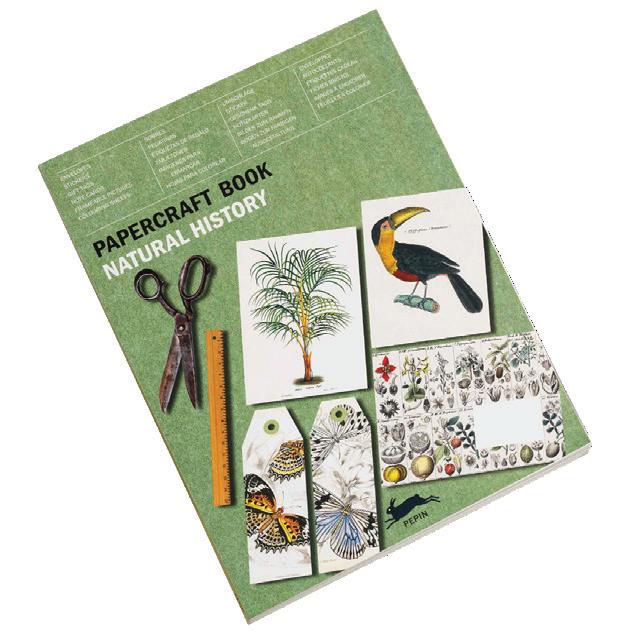MONDAY, NOV. 3, 2025

Women’s soccer: Looking back at Tracy Joyner’s first season

Día de los Muertos in the Jordan Schnitzer Museum

MONDAY, NOV. 3, 2025

Women’s soccer: Looking back at Tracy Joyner’s first season

Día de los Muertos in the Jordan Schnitzer Museum
As Ducks donn Grateful Dead-themed uniforms, “Dead Air Radio” Host Deb Trist offers insight on the tie between the classic band and Eugene.
By Vinny White Arts & Culture Writer
Aug. 27, 1972: The Grateful Dead perform the first of their many iconic shows in the Eugene area to raise money in order to save the Springfield Creamery, an establishment owned by the brother of their close friend, eccentric artist and University of Oregon alumnus Ken Kesey. This concert was a wild success and established a connection between the Dead and the Eugene area that persists to this day. One month later, a chance encounter with Owsley “Bear” Stanley, the sound engineer for the band, led to a young Deb Trist getting an invite to see the Grateful Dead in Jersey City, New Jersey. From that moment forward, Trist, now the host of “Dead Air with Downtown Deb” on 89.7 FM KLCC in Eugene, became forever intertwined with the band.
After the shows, she got to meet the band, and the experience left
an impression on her. “It was three nights; it was amazing,” Trist said.
After their stint in New Jersey, the band left town and returned to California. Not too long after, Trist ended up in the same area by complete accident. Trist wanted to move from New York to San Francisco, so she drove west and stopped when she reached the Pacific Ocean.
Aiming for San Francisco but ending up closer to San Lorenzo, she ended up getting questioned by a police officer while being pulled over, trying to find a final destination. The officer was suspicious that Trist may have been in possession of marijuana, criminalized in the state at the time. While the officer began demanding that he be able to search the car, a bystander began closely observing the traffic stop, insisting to the officer that he was “interested in police procedure.”
“He hung out and the cop final-


With SNAP resources set to be frozen, local food resources include:
Community food resources in Lane County include:
Cottage Grove
Produce Plus Event
305 Coop Ct, Cottage Grove, OR 97424
First Wednesdays of the month starting at 11:30 a.m. Third Tuesdays of the month starting at 1 p.m.
McKenzie Center
Produce Plus Event
2885 Chad Dr, Eugene OR 97408
First Wednesday of the month starting at 9 a.m.
West Eugene
Produce Plus Event
2101 W 11th Ave, Eugene, OR 97402 Thursdays starting at 1 p.m.
Community food resources in Multnomah County include:
Multnomah Free Food Market
8129 SE Malden St, Portland, OR 97206
Every Friday from 2:30 - 3:30 p.m. Bring your own bags.











EDITOR IN CHIEF
Tarek Anthony
PRINT MANAGING EDITOR
Ryan Ehrhart
DIGITAL MANAGING EDITOR
Ysabella Sosa
NEWS EDITOR
Reilly Norgren
INVESTIGATIONS EDITOR
Ana Narayan
A&C EDITOR
Claire Coit
SPORTS EDITOR
Jack Lazarus
OPINION EDITOR
Gracie Cox
PHOTO EDITOR
Saj Sundaram
COPY CHIEF
Olivia Ellerbruch
VIDEO EDITOR
Jake Nolan
PODCAST EDITOR
Stephanie Hensley
SOCIALS EDITOR
Ysabella Sosa
VISUALS EDITOR
Noa Schwartz
DESIGN EDITOR
Adaleah Carman
DESIGNERS
Eva Andrews
Ellery Burton-Tillson
Maya Gooneratne
BUSINESS
PUBLISHER AND PRESIDENT
Eric Henry (X317) ehenry@dailyemerald.com
VP OPERATIONS
Kathy Carbone (X302) kcarbone@dailyemerald.com
DIRECTOR OF SALES & DIGITAL MARKETING
Shelly Rondestvedt (X303) srondestvedt@dailyemerald. com
CREATIVE & TECHNICAL
DIRECTOR
Anna Smith (X327) creative@dailyemerald.com
ACCOUNT EXECUTIVES
Torin Chevalier
Camcole Pereira
Ava Stephanian
Elliot Byrne
THE DAILY EMERALD
The Daily Emerald is published by Emerald Media Group, Inc., the independent nonprofit media company at the University of Oregon. Formerly the Oregon Daily Emerald, the news organization was founded in 1900.
Emerald Media Group 1395 University St.,#302 Eugene, Or 97403 (541)-346-5511


A lawsuit filed Tuesday accuses the University of Oregon of failing to maintain campus trees, alledgedly resulting in a collapse that paralyzed a student.
By Reilly Norgren & Tarek Anthony News Editor & Editor-in-Chief
On Tuesday the University of Oregon was sued for $16.3 million for injuries sustained by a student who was struck by a falling tree on campus in February that left the student paraplegic, according to case documents. The student sustained dozens of injuries, including multiple spinal fractures, inter-
nal bleeding, broken pelvis and ribs, leg fractures and more – leaving the student paralyzed from the waist down, according to the legal complaint.
The student reportedly accumulated $1.3 million in medical costs following the incident and is anticipated to accrue an estimated $5 million in future expenses.
The collapse happened Feb. 24 amid a prolonged wind storm, between Fenton and Friendly Hall, near University Hall. The plaintiff says that UO should have utilized its general alert system to warn students of dangers regarding the inclement weather.
At the time of the incident the downed tree was approximately 50 feet tall.
The lawsuit alleges that after the collapse, the university removed the remains of the tree and its stump and destroyed it with a wood chipper, denying the opportunity for a forensic arborist to examine. This was allegedly after the university had been noti-
Suspended SNAP benefits puts thousands of Oregonians in limbo.
By Corey Hoffman Senior News Reporter
On Nov. 1, the Supplemental Nutrition Assistance Program was paused due to the ongoing government shutdown that started Oct. 1.
Approximately 757,000 Oregonians will not receive food assistance in November, ac-
cording to the State of Oregon’s website.
On Oct. 10, the federal government warned that it would not have enough funding to pay for November benefits and would not release any benefits if Congress could not pass a funding agreement to be signed by President Trump by midnight on October 31.
SNAP benefits are controlled by the U.S. Department of Agriculture and provide monthly food benefits to low-income families by way of a pre-paid card called an EBT card. Benefits are normally issued during the first nine days of each month.

fied of its requirement to preserve evidence.
An email statement from UO spokesperson Eric Howald read,
“We are heartbroken about (the student’s) injuries. This was a terrible accident caused by an extreme weather event. The safety and wellbeing of our students and staff is our highest priority. UO has more than 4,000 trees on its grounds and we take their maintenance and care seriously. We have a dedicated team of experts that regularly inspects the health of our trees, caring for them properly and checking for any issues that could put people at risk. This includes routine assessments, trimming, and any necessary interventions to address potential risks.” Legal counsel for the plaintiff could not be reached at press time. This story may be updated.
According to the Oregon Department of Human Services, which runs the day-to-day distribution of SNAP benefits in Oregon, any unused benefits left over from previous months can still be used.
The ODHS has several free emergency food drops and foodbank locations around the state that do not require SNAP benefits and are open to anyone. They will remain open during the shutdown.
Other food programs, such as free school meals and Meals on Wheels will continue to run during the shutdown.
The ODHS will issue food benefits as soon as possible after the shutdown ends, but delays are expected as there will be a nation-wide queue for processing.
By Corey Hoffman Senior News Reporter
When the University of Oregon’s Kappa Alpha Pi chapter slid into Sydney Luchs’ DMs, asking if she wanted to apply for the executive board, she knew it was her chance to leave her mark on campus.
Kappa Alpha Pi, UO’s new pre-law and government gender-inclusive fraternity, aims to help students interested in government and law collaborate, network and learn about public service. It welcomed its inaugural class on Oct. 23.
Kappa Alpha Pi is a national academic fraternity that President Luchs and Vice President Sarah Berg jumped at the opportunity to bring to campus.
“Having a community of students that are kind of tied together to a national organization was the biggest gap (we’re trying to fill on campus),” Luchs said. “I think that locally, (the) Undergraduate Law Association does a great job, Women in Law does a great job but having something a little bit larger that expands past campus for students that are interested in law and government.”
The three core pillars and guiding principles of Kappa Alpha Pi are, according to Berg, professionalism, service and brotherhood/sisterhood.
To satisfy the professionalism pillar, the organization works to connect students with university alumni and other professionals in the legal field.
For the service pillar, Berg said a large part of why she and other Kappa Alpha Pi members want to go into government is to give back to the community, so the chapter hopes to connect and collaborate with local organizations, both on and off campus.
“The last (pillar) is the brotherhood/sisterhood, and that one was just about us connecting, networking, getting to know each other (and) getting to know people on campus, leaving not only a positive mark within our chapter but also all around campus, (and) being a welcoming organization to people who want to learn about law and government,” Berg said.
The national chapter of Kappa Alpha Pi was started in
UO’s new pre-law and government fraternity hosted a bid-day for its inaugural class on Oct. 23rd.
2007 at the University of Michigan and now has 70 active chapters across the country.
The chapter meetings are speaker-focused, with panels focused on building resumes and LinkedIn profiles and different ways students can use their Juris Doctor degrees, among other things.
UO Kappa Alpha Pi has, according to Luchs, 57 total members including the executive board. With over 150 applications, the number of members is expected to grow in the next coming years as the foundations of the chapter are set.
“I see it only getting bigger from here. I think more and more students are interested in being involved in government and law, so being a hub for all students interested in these subjects, even if their major isn’t political science or they’re not minoring in legal studies, (and) being a hub for students to network, connect with professionals (and) learn from one another,” Berg said.
Advertising for the fraternity was done almost entirely on
80,000 views during its peak, according to Luchs.
“Once national handed control over to me, as a public relations major and somebody who’s had internships in social media, I kind of just got to work on Canva. I think I just played toward what students like,” Luchs said.
Both Berg and Luchs said they’re excited to see what the inaugural class will bring to the table and what the future holds for the chapter.
“We’re an organization that wants to be in the government field, (be) legal professionals, but at the end of the day, we want to make sure that we’re a group of people who are ethical, kind and are going to be a good organization (and) good people,” Berg said.


By Elle Kubiaczyk News Reporter
The University of Oregon Forensics program will gain access to its promised funding of $174,606 for this year, with the funds now being housed within the Department of Student Life, allowing forensics to continue its travel planning for their season this year.
In mid-October, Mock Trial and Debate held discussions with the Associated Students of the University of Oregon and Vice President of Student Life and Provost Christopher Long.
“The teams will continue to have about $180,000 in funding through (ASUO) this year for travel and competitions,” university spokesperson Eric Howald said.
The funding is currently being housed in the Department of Student Life, and it was “decided that it would be best if they sit with those funds, because otherwise they (forensics) don’t have a budget authority to utilize that money,” ASUO President Prissila Moreno said.
The Department of Student Life will support forensics in travel planning for the remainder of the 2025-26 season.
Both Masha Mironova, president of debate, and Moreno confirmed that there are no plans for current Forensics Director Trond Jacobsen to be rehired. His role as the director of forensics ends on Dec. 3 and his instructor position at the Clark Honors College ends on Sept. 3, 2026.
Forensics members are determined to remain a department and, for now, is ruling out the option to become a student-registered organization within ASUO. Moreno, the Department Finance Committee of ASUO and the provost will work in conjunction to find a new academic home for forensics by the end of December.
Moreno said that ASUO is aiming to make forensics as budget neutral as possible for prospective academic homes, which signifies increasing ASUO
funding by $15,000 to support a travel advisor.
“It seemed like the reasoning for a lot of the academic homes saying no, at first, or being hesitant, was because it would cost money for them,” Moreno said.
Accessing forensics endowment funds might play a key role in increasing ASUO funding. All endowment funds are made out to the Department of Forensics or the director of forensics, and as a result, “UO Foundation would need to work with the donors to rework the language in the endowments,” Mironova said.
Parker Nagy, vice president of Internal Affairs for Debate adds, “We cannot ensure long-term stability of the program without institutional support from the university in the form of being a department.”
A student-run program model would not bode well with the nature of forensics travel schedule, as “they don’t always know if they’re going to make it to the next round up until two weeks before,” Moreno said. All student-run organizations are required to complete all travel planning six to eight weeks in advance of travel.
Funding for the program would be significantly less as a student organization. “The highest I’ve seen student organizations is $40,000 to $60,000,” Moreno said.
Forensics would begin in the lowest of four tiers of student organizations and as a result, student leaders would not receive stipends for new travel and budget planning responsibilities.
“It would kind of be like starting from zero, and that’s really scary for an organization that has been around the University of Oregon. It kind of feels like the path of becoming a student organization is the beginning of the end of forensics,” according to Moreno.







Opinion: Beauty is nice; nourishment is better. Fruit trees would bring both to UO’s campus.
By David Mitrovčan Morgan Opinion Columnist
I first discovered the pleasure of a campus that feeds you on a September afternoon at Pitzer College. An orange tree caught my eye – its branches sagging under the weight of the fruit it bore. The dry California heat, my fingers sticky from peeling an orange I had picked myself and the bright taste of fresh citrus on my tongue; it’s a moment that lingers in my memory.
When I called Hudson Schneider, a junior at Pitzer, I learned my impromptu orange was quite intentional, a deliberate rhythm built into the campus. “The fruit ripens in stages across the duration of our stay, with some fruits ready when we come in the fall and others ripening in the spring. It’s a great way to taste the passing of time,” Schneider explained.
They achieve this by growing “lemons, limes, oranges, persimmons, pomegranates, olives, figs, apples and allegedly strawberries,” Schneider said, adding that most of them are “put next to high-traffic areas so they’re easy to pick on the go.”
This stands in sharp contrast to our beautiful
but barren campus. Across the University of Oregon, the grounds are lush and meticulously maintained, with mowed lawns rolling between walkways lined with trees now flaming red. While our landscape is stunning and equally alive, we do not get to taste the seasons shifting.
Of course, geography plays a role. Being in Southern California, Pitzer can grow almost anything with a pit or peel. While the task may be more difficult in Eugene, apples, pears, cherries and peaches still thrive here. Not to mention, as Sam Hill wrote in Serious Eats, “it’s as if Willamette Valley… was created to grow berries. The cool, mild winters and warm-but-comfortable summers create the perfect microclimate for… berries to thrive.”
At a time when food insecurity quietly shadows college life, every source of fresh food matters. A few trees won’t replace a grocery budget, but they can supplement it and increase our students’ consumption of fresh produce. Schneider underscored this. “Picking fruit isn’t something I set out to do,” he said. “But walking to class or hanging with friends, I’ll spot something tantalizingly ripe and it’s just hard to pass by.”
Emma Singleton, a senior at the University of Oregon, had a similar story. “I grew up in Applegate, Oregon, and we had fruit trees all over the place. My mom would pick apples or plums on our way home from school to make canned applesauce, dried plums, fruit leather or anything else she could think of.”
(Sofia Campbell/Daily Emerald)

There is, of course, a logic behind the fruit tree absence. They drop fruit that rots, attract animals and require maintenance. They also pose a liability risk. Under what’s known as the “doctrine of attractive nuisance,” landowners can be held responsible for injuries caused by something enticing, like a climbable, fruit-laden tree. Still, the case for fruit trees outweighs the mess or the risk. The occasional fallen apple is a small price to pay for a campus that offers more than shade and scenery. Fruit trees invite participation in our shared spaces in a way ornamental plants simply can’t. They invite us to touch, use and care – to taste the cadence of time, be healthy and connect to the land we inhabit.
A flourishing campus should nourish those who make it thrive. If UO wants to nurture a sense of belonging as much as it does aesthetics, I believe it ought to plant more fruit on its campus. Our communal places need not be our most manicured.

David is an opinion columnist for the Daily Emerald and a senior studying data science, economics and philosophy. In his writing, he enjoys finding the abstract relationships between systems and the decisions we make everyday, weaving them into a tangible story readers can easily digest.

Rachel Ehly is an opinion columnist for the Daily Emerald and is studying Journalism and Political Science. She could talk for hours about all things politics, pop culture and music.
By Rachel Ehly Opinion Columnist
I’ve been working for free since I was eight years old.
Giving up recess to shelve books in the school library was my first experience volunteering and it’s changed my life for the better.
Volunteering provides a plethora of opportunities, especially for students trying to build resume experience.
In high school, I volunteered for a local library where I helped their publicity team run the library’s social media accounts. This volunteer experience has stuck with me through my academic career. It’s resume experience, it’s references and it’s connections outside of my academic field.
Volunteering is beneficial to every college student. Helping people who need it and being part of something bigger than yourself is reason enough to start volunteering.
In a place as big and diverse as Eugene, volunteer opportunities seem to be endless. There are so many local organizations that welcome any help they can get to serve their community.
Places like Food for Lane County have over 150 programs that require volunteers, according to Dan Budd, Food for Lane County’s volunteer coordinator.
“It takes so many different hands to make this thing successful and to get the food out to the community members,” Budd said.
Opinion: Volunteering and giving back to the community is always worth the time commitment, especially for students looking to gain real-world experience.
Food for Lane County has a bountiful amount of volunteers, but new people eager to help their community will never be turned away. Not only does the organization serve those in need, but it creates a welcoming environment that keeps volunteers coming back.
“During COVID, we had so many volunteers who wanted to come out just purely for the social aspect,” Budd said. “(People) just want to get out and help and do something… and I think that is a big driving force for us here as far as what keeps people coming back.”
The community that forms from helping other people is a driving force that has volunteers returning. As volunteers keep going back, they form connections with other volunteers that have a shared interest in bettering their community.
Volunteering isn’t one-size-fits-all. Food for Lane County is just one of many organizations students spend their time at to make a difference.
The Boys and Girls Club of Emerald Valley, which serves Bethel and Eugene, provides volunteers with more hands-on interaction with the community.
Club Director for the Boys and Girls Club’s Eugene Clubhouse Phylicia Wilson notes the importance of college-aged students working with kids.
“I think it is so important for (students to) reach out to their community as they’re growing and developing,” Wilson said. “Get them in the
field that gives them that exposure to the kids, especially in their community.”
On top of providing necessary community service, volunteering gives students valuable career experience in so many different fields.
Those looking to work with kids can gain experience through organizations like the Boys and Girls Club. Those wanting to work in the medical field can volunteer for local clinics.
No matter your interests, there is a place for you.
When asked to give advice for students looking to explore volunteer opportunities, both Budd and Wilson expressed that the most important quality to have is confidence in the mission and the community.
“Be confident in you and know that there are people in the community that really need you and need your support,” Wilson said.
Any time spent giving back to the community and helping people is never time that is wasted.
While the life of a college student is often busy, many volunteer programs in and around Eugene notice student volunteers flocking toward nights and weekends to give their time.
Volunteer organizations accept as much time as their volunteers are able to give, whenever that may be.
The experiences you have while volunteering and helping your community will stick with you for a lifetime. I know mine will.
ly took off,” Trist said. “We slept on that guy’s floor. The next day, guess who was (performing) in town? Grateful Dead! They were there, and so I knew it was meant to be.”
Not too long after, Trist became closely intertwined with the band, Kesey and others in their circle.
“I was friends with them; I would go to a lot of their rehearsals at Front Street,” Trist said. “Friends and family came together there; it became part of that Grateful Dead family. We all liked each other.”
Trist witnessed many of the iconic shows the Grateful Dead performed in the area, starting with their 1982 performance at the Oregon Country Fair site in Veneta. She was fond of Eugene and chose to move there to raise her children. Over her decades in Eugene, Trist witnessed firsthand how special it was when Dead came to town.
“It was like ‘Rejoice!’ People were so glad,” Trist said. “Seeing your friends at the shows had this kind of healing and power. Even if you didn’t know the people, they were friends, they were family. It was very special.”
Seeing your friends at the shows had this kind of healing and power. Even if you didn’t know the people, they were friends, they were family. It was very special.
In 1986, Trist started requesting the DJs at 104.7 KDUK to play more Grateful Dead. She even offered to give them some of her tapes. Instead, the station hired her and she began a radio show that still runs to this day (Although it has since moved to 89.7 KLCC).
As the years rolled on, Trist continued her show as the Dead kept coming to town. They even performed at Autzen Stadium with Bob Dylan on the “Dylan and the Dead” tour.
Eventually, in October 1990, the Grateful Dead were banned from the University of Oregon after Vice President Dan Williams felt the
association with drug culture was not a good look for the university. This led to outrage, not just from “card-carrying Deadheads” (as Trist calls them) but from the local community.
“There was all this revenue in town, so people who worked here or had businesses or hotels or restaurants were more than happy to have the band show up with all of their fans,” Trist said.
Public protests followed, and the ban was lifted three years later. Williams later admitted that an all-out ban on the group was not the right choice.
“I think at the time I probably had the right reasons, but with time I began to think that there was a better answer than ‘no,’” Williams told The Daily Emerald in 2010.
When the Dead made their fateful return in 1993, Autzen became a great venue for Deadheads. The band had cultivated a unique group of fans that would camp out in parking lots for days to see the group play multiple nights in a row, something that was becoming less common in the 90s.
“I think Autzen Stadium was one of the last places they let people actually camp out at,” Trist said. “They would have their buses, they would set up tents or they would just stay there, which is a rare thing for concerts.”
Trist even connected to the mixing board and broadcast the performance at Autzen Stadium live on the air.
This freedom also allowed other spinoff events, like when Kesey debuted his play entitled “Twister: A Ritual Reality in Four Quarters,” after the Dead’s second 1993 Autzen show. The surrealist, purposefully overwhelming, adaptation/parody of “The Wizard of Oz” did not garner much critical success during its later showings, but Deadheads were all but willing to gather in the National Guard Armory and witness Kesey and his followers, the Merry Pranksters, demonstrate classic characters battling with modern issues such as tornadoes, famines, AIDS and more.
Due to Jerry Garcia’s untimely passing at age 53 in 1995, the Grateful Dead played their last shows in Eugene from June 17-19, 1994. Their show on June 17 was particularly memorable for two reasons: the weather and O.J. Simpson.




Autzen was doused with rain, despite the adage that it “never rains in Autzen Staduium.” The band reacted to the weather by performing rain-related songs, such as their original “Samba In The Rain” and cover of “Rain” by The Beatles. The concert also allowed the crowd to miss a now-infamous low-speed car chase. “O.J. Simpson, the White Bronco Chase, that whole thing; everybody in the country knew about it or they were watching it, and it was going on for hours,” Trist said. “We were oblivious. We didn’t know anything because we were just dig-
Even after Garcia’s death, the spirit of the Grateful Dead still lives on in the area. Whether it’s through Trist’s radio show or the Ducks filling Autzen with tie-dye, the Dead never seem too far



The Jordan Schnitzer Museum of Art helps honor the dead with food, music and art for el Día de los Muertos.

(Noa Schwartz/Emerald)
By Gray Vanderpoel Arts & Culture Writer
The Jordan Schnitzer Museum of Art, located at the University of Oregon, hosted a viewing for Día de los Muertos (the Day of the Dead) from Nov. 1 to 2nd in honor of the holiday and as a way for the student body to participate in its celebrations.
The MEChA student group, or Chicanx Student Movement of Aztlán, a student group that helped promote culture and education behind the event at the museum, said they planned to honor the Day of the Dead with ofrendas, food, music, and art. The group encouraged students to bring pictures of passed loved ones to place on las ofendas displayed to honor and celebrate their life.
“It’s exposure to culture that some might not have, especially in the United States,” Rendon-Chavez said. “It’s very important to see it and see the culture behind it, especially the ofrendas that we put up; you can honor the people who have passed away.”
The organizers stressed that the ofrendas themselves took two full days to set up, and Rendon-Chavez had been planning this and other Day of the Dead events before school had even started.
Armando Morales is another event organizer who has been helping bring Latin festivities to Eugene since 1978. When he started working these events, he had no idea the number of people and attention they would come to have.
In previous years, MEChA and the staff would host Día de los Muertos celebrations at the EMU, but after the museum reached out, they started extending Day of the Dead celebrations there.
Mount Pisgah Arboretum hosts its annual mushroom festival.
By Elise Alvira Arts & Culture Writer
If you didn’t know, fall is the ideal time for mushroom harvesting in the Pacific Northwest. What better way to honor this than with a mushroom festival, such as Mount Pisgah’s annual event held this year on Oct. 26?
“Fall is one of the best times for mushroom harvesting. If you can hear the rain right now, you can also hear the mushrooms growing,” Audric Macone, an employee at a mushroom farm called The Mushroomery, said. “Oregon is the perfect place for mushrooms with the elevation, the Cascades, humidity and rain – mushrooms love the wet.”
Since 1981, Mount Pisgah has put on the mushroom festival on the last Sunday of every October.
“It’s the flip side celebration to the Wildflower Festival,” Ilana Jakubowski, executive director of Mount Pisgah, said. The Wildflower Festival is held every May to celebrate the new bloom.
Everything from classic cremini mushrooms you can find at the store, to common PNW species like Russula Turci, Flaming Yellow Pholiota, Purple Gray Mycena and more were on display nestled in moist tanbark.
“We have one of the largest mushroom displays on the West Coast, with over 300 species of mushroom on display inside our pavilion,” Jakubowski said.
The festival featured an array of local bands like Ruzha Rukuru Marimba and Ballet Folklorico Colibri, along with food trucks serving festive delights like mushroom soup and cider, their annual scarecrow contest and hourly mushroom education presentations.
Macone helped to lead Mushroomery’s “how to
grow your own mushrooms” presentation. Located in Lebanon, Oregon, Mushroomery is a family owned mushroom farm that grows gourmet and medicinal mushrooms.
For the presentation, Mushroomery demonstrated how to grow your own Oyster mushrooms at home, with just a piece of cardboard and coffee grounds.
“It’s one of those funny things. I feel like people who are into mushrooms are really into mushrooms. When you go down the rabbit hole learning more about mushrooms, they really are incredible. There’s a whole range of benefits,” Jakubowski said.
What started out as a day full of a symphony of rainstorms, abruptly turned into a game of tug of war for the sunshine and a muggy atmosphere –the ideal environment for mushrooms.
For a town known for its eclectic arts and culture scene, the annual mushroom festival is a strong testament to Eugene’s history, nature and tight-knit community. Coincidentally, the festival happened to fall at the end of University of Oregon’s Grateful Dead-themed football game weekend, further acknowledging Eugene’s eclectic, good-natured community.
( ABOVE) An attendee purchasing a grow-at-home mushroom kit. The Mount Pisgah Arboretum in Eugene, Ore. hosted it’s annual Mushroom Festival, featuring live music, food, mushroom exhibits, and more on Oct. 26, 2025. ( BELOW ) Attendees gaze upon the wide selection of mushrooms the festival has on display.
(Fred Hall/ Daily Emerald)
This year’s celebrations also brought up the topic of how important culture is to make a difference in the Eugene and UO community.
“The best way to stop racism is culture,” Morales said. “I don’t like my neighbor. But I don’t have any right to go and paint his house, to throw garbage outside his house just because I don’t like him. Everyone has their own beliefs (and) their own culture; the only thing we need to have is respect.”
The students and staff believe that experiencing different cultures and seeing each value and belief can be a key to creating a more inclusive world, and for this event specifically, also to honor those who have passed. Within Día de los Muertos, death itself is a character with a deep and beautiful meaning that contradicts the basic idea of death being something to fear.
“Death is the most democratic character,” Morales said. “Death doesn’t have race. Death is death; it doesn’t have any color.” Each MEChA and staff member put in endless effort for Día de los Muertos celebrations to connect the people at UO through the honoring of the universal idea of death.
Eugene’s celebrations of Dia de los Muertos kept people’s memories alive, and at the same time, educated and made a valuable change to the Duck community. “We believe that for you to stay forever or to stay on this earth,” Morales said, “someone needs to remember you.”






gene, Oregon ww.eugenegeartraders.com low Us @eugenegeartraders.com












During the two-day event, The Duck Store will have a buy two, get one of M. Graham paints. M. Graham’s preservative-free paints come in acrylic, oil and watercolor, and offer consistent quality and application. Whether you’re a professional or just starting out, their vibrant colors are perfect for any artist.

Copic markers are highly regarded for their alcohol-based ink. With a wide selection, these markers are perfect for artists looking for smooth blending and vibrant colors. Copic also offers longevity through replaceable and refillable parts.
Most Art & School Supplies will be 25% off for the duration of the Tools of the Trade Show, so swing by to check out some of these products and more.

SPONSORED CONTENT

The right notebook can be hard to come by, but easy to fill with colorful thoughts and ideas. Eeboo, a brand owned and designed by women, offers a selection of vividly colored notebooks that are the perfect way to spice up your stationery. These sturdy notebooks can help spur creativity, and help keep your thoughts organized.



Stickers are the perfect accessory to — well, anything. Pepin Label, Sticker and Tape Books come in a variety of designs to choose from, including themes like natural history and marine life. These stickers and labels are a fun way to label packages, seal envelopes and decorate just about everything. *Sale valid during show dates only. Available only at Flagship Campus Duck Store. Not valid on special orders. No additional discounts or promotions apply. Some other conditions may apply — see UODuckStore.com/discounts for details.
1 Backyard location with power tools
5 Iconic gummy bear company
8 Neo-soul pioneer known for “Lady” and “Spanish Joint”
9 Subtract a negative number
10 Additionally
11 Black ___ (2014 album by 8-Across, once dubbed “R&B Jesus”)
13 Title for 30% of popes
14 Sign of an excited dog
1 Opposite of tints, in painting
2 Woodworking device that exhausts your arm
3 Small energy unit
4 Doing keto or paleo
6 Become swollen
7 Prolonged sound of awe
8 Beaver edifice
12 Singer who’s “gonna swing from the chandelier”

Is 2025 a record setting year for players?

Rambus steals



Nov. 8, 2025
Oregon vs. University of Montana
The Ducks women’s basketball team gears up to play the Grizzlies this Friday afternoon at Matthew Knight Arena at 2:00 p.m. PT.
After an upset at home over No. 8 Washington, The Daily Emerald looks back at the Ducks’ season.

By Harry Leader Sports Writer
The Oregon women’s soccer team finished its season in style with a 2-1 win over the first place Washington Huskies on Oct. 26 in its only conference win of the season. The season ended with a win, but the Ducks’ season as a whole wasn’t exactly that.
The Ducks finished their season with a record of 1-6-4 in Big Ten play which put them last in the standings with 7 points. This year was an overall improvement in terms of points in the conference standings as they finished with five last season, but Indiana finished with four which meant the Ducks were not in last place in 2024.
Oregon made a coaching change this season, hiring former University of California-Davis Aggies head coach Tracy Joyner to replace Graeme Abel, who resigned following the 2024 season. Joyner was successful with the Aggies with an overall record of 49-37-8.
Joyner’s first season didn’t end in many wins, but there were definitely positives from her appointment. One of the players she brought from UC Davis was goalkeeper Caeley Goldstein. Goldstein became an integral part of the team, finishing with 70 saves, fourth most in the Big Ten.
“Oh, I’m so happy for her,” Joyner said in a postgame press conference. “In July, when we were going through the waiver process of getting her year back from UW to come here, we were like, gosh, I love this. The last game of the year is going to be against UW, like, this is awesome. You know, like we couldn’t have driven it like drawn it up better for her. It’s surreal for her, I’m sure, and just what a great way to close out an amazing career.”
Another key player on the team was junior forward Lauren Kenny. She finished the season as the Ducks’ top goal scorer with three goals and one assist. Kenny scored the game winning goal against the Huskies on a hectic goal line tap-in during the final minutes of the game.
Joyner believes the Ducks’ victory over the Huskies in the final game of the season gives the program the momentum it needs to succeed in the near future.
“Yeah, I think everyone knows that this program is just going to be something that’s on the rise and I know that it’s a desirable place for recruits and players to be,” Joyner said following the win against Washington. “I mean certainly a top win over a top 10 team doesn’t hurt. I think we’re just going to continue to focus on, you know, the things
By Owen Murray
Associate Sports Editor
Missouri State University (away)
Feb. 8, 2026
The Ducks take on a lower-tier program to kick off the year once again, and the Bears aren’t a particularly successful one thus far. Missouri State had just one win a year ago (it was a tough schedule, with four ranked programs, for what it’s worth), and Oregon will look to start its year with a bang. In last year’s opener, the Ducks posted a four-year high in points in their win over Morgan State University.
Hawaii Pacific University (away)
March 25, 2026
The Ducks’ schedule is out, here are their most difficult battles of the 2026 season in order. 7 6 5 4
Yes, both of their easiest meets are on the road, but the Ducks have thrived in Honolulu and put up a perfect-10 last time they visited, in 2024. The Sharks were winless last year, and Oregon will be looking to fine-tune its events ahead of
its second meet against Baylor — expect full-strength routines and minimal changes at this point in the season, and for the Ducks to push for more perfect-10s.
Iona University (home)
March 15, 2026
Oregon was one of just two teams to beat the Gaels last year, but the Ducks did so handily (270.630-257.370) on the back end of a spring break road trip that saw them take a much closer victory over Quinnipiac University just five days earlier. Iona was one of the best-of-the-rest in last year’s field, and unless it can take another giant leap, Oregon should handle it with relative ease.
Gannon University (home)
March 6, 2026
This time, the Ducks’ middle-tier, back-to-back matchups come at home — and Oregon will have plenty of time in Eugene before this one, with a home meet against Quinnipiac before it on Feb. 21. Last year, the Ducks made changes to
that are going to make us great and it really starts with a really competitive culture that’s founded on respect and like a deep love and understanding for each other and for the game. And I think we’ve certainly started to take massive steps toward that.”
One of the biggest improvements from last season has been the defense. The Ducks allowed 12 fewer goals this season compared to last season in which they allowed 33 goals. The penalties also improved, as they picked up no red cards all season compared to the three Oregon accrued last season.
On the flipside, Oregon scored the same number of goals, 15, as last year, but took 38 more shots, making them less efficient overall. Their shots were also less accurate, with a four percent drop in shots on target.
The upset rivalry victory proved to be a silver lining on Joyner’s first season while also giving the Ducks a great deal of momentum to carry into an important offseason. Oregon will have the chance to prove its a program on the rise rather than a conference bottom feeder going forward.
their seven-element acro throughout the season but avoided any major tweaks toward the end, and this (the third of seven meets) could be the spot for changes. It’s not a seriously inferior opponent, but the Golden Knights took a big step back from 8-3 in 2024 to 3-5 in 2025 and must rebound to return to the upper echelon of the NCATA in 2026.
3
Quinnipiac University (home)
Feb. 21, 2025
The Bobcats have consistently reached that upper echelon that Gannon is dancing around, and were the third seed behind Oregon and Baylor in last season’s NCATA Championships. Oregon’s 272.380-271.165 win in Hamden, Connecticut on that East Coast trip was its closest of the regular season, and they met the Ducks again in the postseason. Expect to see them more than once, and with this matchup set to be Oregon’s home opener, it’ll be crucial to get up to speed quickly.
2 & 1
Baylor University
(away: Feb. 28, 2026; home: April 6)
In all reality, Oregon’s matchup that matters the most is whenever it runs into Baylor (probably) in the postseason. These two, though, are opportunities to beat the Bears for the first time in a while — and prove it’s possible. Baylor hasn’t lost since the Ducks beat them in 2021, and a regular-season victory would go a long way toward postseason confidence. The first one is another test of who can hit the ground running quicker (it’s Oregon’s third and Baylor’s fourth meet), while the latter is their final chance to shake up the NCATA Championship rankings. If they go into the postseason ranked first and second, they couldn’t meet until the final. The first is probably the more difficult one, but both are undoubtedly the Ducks’ toughest regular-season tests in 2026.



